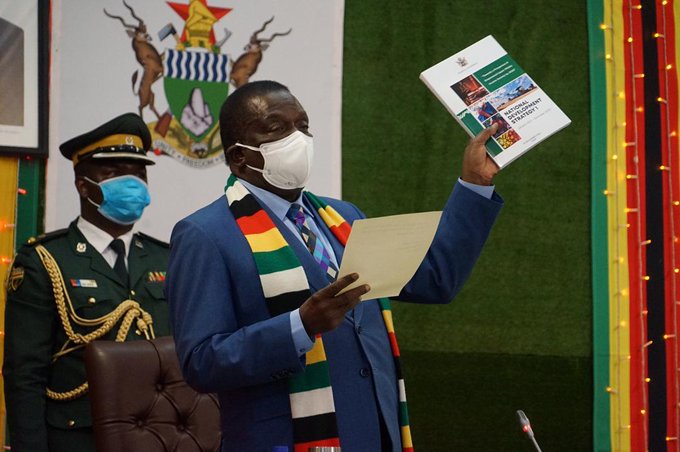This follows President Emmerson Mnangangwa’s launch of the Gukurahundi Community Engagement Outreach programme over the weekend in Bulawayo.
Themed: “Promoting healing, peace and unity through community engagement: Sikhuthaza ukwelatshwa kwamanxeba, ukuze kube lokuthula lokubambana lokuxoxisana”, the program is unilaterally led by Chiefs in Matabeleland North and South, working with a 14 member panel that includes youths, women, religious leaders and community elders.
Gukurahundi is a dark patch in Zimbabwean history where former colonisers fuelled tribal politics resulting in a period of violence and conflict that affected some parts of Matabeleland and Midlands provinces in the 1980s.
The highly emotive conflict has been used by detractors backed by Western powers to divide the country along regional and tribal lines.
Bulawayo’s North-end suburb resident, Melusi Moyo (58), said the only way for the country to completely heal is to have an earnest discourse around Gukurahundi.
“It is a dark part of our history that still torments many people, so you can’t really tell people how to feel about it,” he said.
“The best way to deal with pains of this era is to discuss it and try to find earnest ways to heal the wounds of the past, mapping a way forward.
“It’s good that the Government finally gave the power of discussion and reconciliation to the affected people rather than bringing outsiders to discuss the pain they have never experienced.”
The Second Republic under the leadership of President Mnangagwa has been trying to formulate ways to bring about healing and closure on Gukurahundi since 2019.
Government thus mandated the National Council of Chiefs, at that time led by Chief Fortune Charumbira, to come up with a roadmap to national healing.
Leah Mazibuko (35) said genuine dialogue will lead to national healing.
“From the stories I grew up hearing from my grandparents, this is something that still torments people, that’s why sometimes you find families refusing to accept a son or daughter in-law of Shona origin,” she said.
“It’s a past I for one wish to find closure on so that we can move ahead as a united people who see past mistakes and hurts.
“We cannot bury the pain, thus there is need for genuine dialogue and healing, and I believe this initiative led by traditional leaders will bring that about, she added”
Some people are still sceptical on whether or not the process is genuine.
This notion has been fuelled by dissenting voices who, from the onset, implied that the Government was importing outsiders to address an issue that can only be inquired by those who are part of the tribes that were affected during the era.
The National Chief’s Council is however now led by Chief Mutshana Khumalo of Ndebele origin.
Chief Khumalo said the new approach was formulated in consultation with traditional leaders from the Matabeleland regions.
“The National Chief’s Council convened a meeting with Chiefs from Matabeleland North and South to solicit input on the methodology and road map for the resolution,” said Chief Khumalo.
“The engagement was crucial in refining our approach. We developed a manual out of it which is essentially our constitution and primary guide on how we will conduct the exercise.
“Following the development of this manual, to date the National Chief’s Council has been steadfast in the commitment to capacitate Chiefs and members of the Chiefs’ Panels from Mat North and Mat South.
“This capacitation included training in documentation, conflict resolution, historical context and effective communication
“Our mandate is to ensure that our outreach program is inclusive and representative of all affected communities.”
Meanwhile, President Mnangagwa has warned detractors who are exploiting pains of the past in efforts to destabilise efforts on nation building, unity and peace.
President Mnangagwa said, “Our unity must stand as an immovable barrier to prevent their historic goal of subjugating us in numerous ways including in the economic sphere. The interference by our detractors manifest itself in different ways.
“They manifest as political parties with a regional agenda which seeks to divide our people and to question the unitary nature of our State. We see them!
“They manifest as voluntary organisations ostensibly concerned with the people’s plight yet they exaggerate and magnify regional grievances whilst at the same time seeking to belittle our efforts at reconciliation and unity at the behest of their founders. We see them!
“They are present in all forms of the media including social media, propagating statements of hatred, difference and vengeance against specific groupings of our nation. We see them! Let us all say to them you shall not succeed.”
The Gukurahundi dialogue has proven that home grown solutions are the best at resolving internal conflicts, as they are all incorporating to include the grassroots, the community leadership and our national leadership. There is no option for failure as the country looks forward to the finalisation of the Gukurahundi issue and peaceful healing to the nation.




